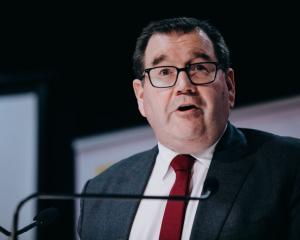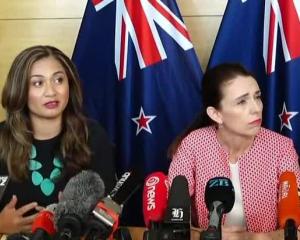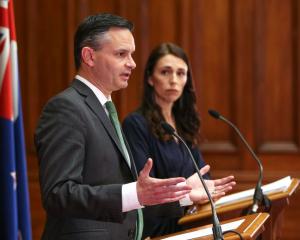
Finance spokesman Grant Robertson said the plan was updated following last week’s pre-election fiscal update — the opening of the Government books to give every political party a chance to cost its own policies against the Treasury’s forecasts.

"Labour will invest in better education, affordable housing, greater access to health services and lifting children out of poverty — and we’ll do it without increasing income tax."
Labour leader Jacinda Ardern last week backed away from lifting the top tax rate, as had been previously announced. Instead, Labour would roll back National’s previously announced tax cuts due next year, which Mr Robertson said would give $400million to the top 10% of income earners.
Mr Robertson said Labour’s plan meant investing an additional $8billion in health, $6billion in education and $5billion in families over the forecast period which ends in 2021-22.
Labour’s spending commitments had been fully costed by independent economic agency Berl, and could be delivered in line with the party’s Budget responsibility rules, he said.
However, a closer look at the fiscal plans show Mr Robertson is not allowing for any downturn in the global or domestic economies.
Operating balances excluding gains and losses (obegal), the preferred measure of economic wellbeing, continue to grow in Labour’s forecast, although not as quickly as those forecast by the Treasury in the first two years.
The Prefu had an operating balance of $2.9billion for the 2017-28, or 1% of GDP. Labour has a forecast balance of $2.5billion, 0.9%.
Labour’s forecasts start to exceed those of the Treasury in 2019-20. The Treasury was forecasting an obegal of $5.74billion that year, followed by $6.44billion in 2020-21 and $8.1billion in 2021-22.
Labour is forecasting obegals of $4.9billion, $6.5billion and $6.6billion in the same period.
The balance sheet forecasts show Crown tax revenue rising between the financial years ending June 2018 and 2019, up 6% to $82.8billion. Tax revenue growth continues at 6% the following year to $87.9billion and at 5% in 2021 to $91billion.
Also, Mr Robertson was forecasting interest revenue and dividends to remain positive, ranging from $3.8billion in the current year to $4.4 billion in2021.
During the past nine years, dividends from government investments, such as those from ACC and the New Zealand Superannuation Fund were sometimes negative because of global sharemarket volatility.
Assuming every year was going to be positive for sharemarkets is not a likely scenario.
Total revenue forecasts from Labour are $108.3billion in the current financial year, $114.2billion in 2019, nearly $120billion in 2020 and $125billion in 2021.Mr Robertson said Labour’s surpluses would exist once its policy objectives had been met.
"We will not artificially generate surpluses by underfunding key public services."
Higher investment in operating expenditure in health, education and police was offset by higher revenue from cancelling National’s tax cuts, closing the speculators’ tax loophole and reducing multinational tax avoidance.
By running consistent surpluses, Labour would be able to reduce debt to sustainable levels, he said.
The fiscal plan showed debt reducing to 21% of GDP by 2020 from the current 23%.
Mr Robertson also promised to restart contributions to the New Zealand Superannuation Fund, started by former Labour finance minister Sir Michael Cullen.
Restarting investment in the super fund would increase the size of the fund to more than $63billion by 2022-23 and would help keep superannuation at 65 sustainable, he said.
In the current financial year, Labour would inject $500million into the fund, followed by injections of $1billion, $1.5billion and $2.2billion in the following years.












